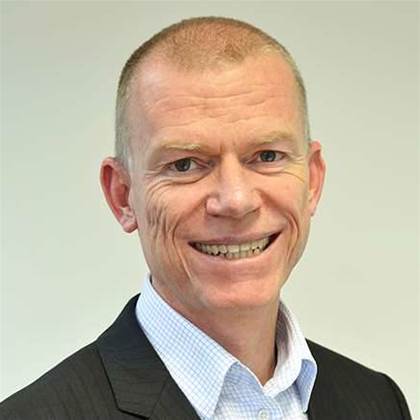Newcrest Mining CIO Carl Duckinson has handed IT leadership of the gold miner to Gavin Wood, an executive he hired 18 months ago, to lead a streamlined IT team.

Duckinson was CIO for seven of his ten years at Newcrest, and has been gearing up to leave the company for some months.
Duckinson has joined fellow Newcrest exiles Tom Bendistinto (former head of IT service delivery) and Athol Marks (former manager of mining systems) to form an IT management consultancy called TACT.
The trio departed Newcrest after a series of cost-saving restructures the Melbourne-based miner has undertaken to secure its future in a market where gold prices have fallen 20 percent during the past two years.
For the past three years, Duckinson and his team have looked to outsourcing – with an emphasis on a new generation of cloud computing services – to help deliver IT to the gold mine at a lower cost.
“I have gained so much experience in my time at Newcrest and built a lot of skills CIOs and their direct reports could use,” Duckinson told iTnews.
TACT will provide consulting services to help CIOs embrace the cultural changes necessary to embrace cloud computing and mobility.
Many technology leaders, Duckinson said, are “struggling to deal with these changes quickly enough".
He thinks the fears of embracing cloud computing – valid or not – have slowed technology decision-making.
The impediments usually concern people and culture, rather than technology, he said.
“People don’t want to go to the cloud if they are conservative or feel their jobs are at risk,” he said. “IT departments have a vested interest in not going to cloud. The CIO has got one hand tied behind their back before they even start.”
Once a firm decision to pursue cloud has been made, technology leaders often “struggle to move from the skill base they’ve got to the skill base they’ll need in the future,” he added.
TACT will initially target asset intensive industries like mining for consulting work, which in the context of current commodity prices is likely to focus on how to engineer costs out of the business.
There is a strong opportunity to cut costs quickly by moving revenue out of business-as-usual IT activities and into cloud models, he said. This enables an organisation to “turn on new capabilities without going cap in hand asking for more capital”.
Duckinson expressed confidence that his successor, armed with previous experience in architecture, strategy and applications roles, would be the right fit for the leaner Newcrest legacy left behind.
Read on for more on why former CIOs are forming advisory services…
Duckinson isn’t the first Newcrest mining exec to step out of the CIO role and into advisory services.
His former boss, Ken Matthews, founded CIO Advisory after stints at BHP and Newcrest, and now employs seven other former CIOs to advise large organisations on technology strategy.
Matthews describes them as a crack team of “grey hairs” – CIOs with experience at global firms – that can be called in to resolve problems within the technology portfolio as they arise. The organisation usually finds itself pitching for business against younger candidates from Deloitte or KPMG.
Matthews told iTnews he feels the “CIO role is dead in its current form”.
“Most people can’t tell you what a CIO role does,” he said.
“The fundamental mistake most CIOs are making is thinking its simply making all the technology decisions for the company. That’s an IT manager, not a CIO.
“The CIO is a business role, with a technology portfolio. If you focus on the technology, you’re limited to being an operations guy. So it’s sometimes our job as advisors to come in and tell the CIO what their job is.”
The CIO role is “on its way” to morphing into a digital one, he said, which tends to attract younger talent. The CFO, meanwhile, is gaining more authority over technology decisions and the “gap between the two skill sets is growing larger,” Matthews said.
Matthews thinks today’s CIOs are not being adequately trained for the responsibilities of the job. He recalls being handpicked amongst a select few IT workers by former BHP CIO Peter Littlejohn to be “systematically trained in the skills to one day do the CIO job”.
“I lacked commercial skills, so [Littlejohn] gave me a mentor with those skills and put me in a commercial role. I’d worked in Asia, but not the US, so he appointed me a role in the US. He systematically worked out where my gaps were and helped me to fill them.
“I believe the next generation of CIOs – the junior CIOs – should be allocated a senior CIO as a mentor,” he said.
“The problem is, the CIO role is now is filled by recruiters who just want to get the best person available for under a set price. Organisations are not spending enough time working out what they want to achieve, finding the right experience to get it done, and spending enough time on support to do the job well.”
Do you think the CIO's of yesteryear were better skilled than those of today? Comment below...


_(20).jpg&h=140&w=231&c=1&s=0)
.png&h=140&w=231&c=1&s=0)





_(26).jpg&w=100&c=1&s=0)

 iTnews Executive Retreat - Security Leaders Edition
iTnews Executive Retreat - Security Leaders Edition












_(1).jpg&h=140&w=231&c=1&s=0)



